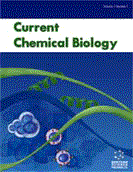Abstract
Background: Synechococcus sp. WH8102 is one of the most abundant photosynthetic organisms in many ocean regions.
Objective: The aim of this study is to identify genomic islands (GIs) in Synechococcus sp. WH8102 with integrated methods.
Methods: We have applied a genomic barcode to identify the GIs in Synechococcus sp. WH8102, which could make genomic regions of different origins visually apparent. The gene expression data of the predicted GIs was analyzed through microarray data which was collected for functional analysis of the relevant genes.
Results: Seven GIs were identified in Synechococcus sp. WH8102. Most of them are involved in cell surface modification, photosynthesis and drug resistance. In addition, our analysis also revealed the functions of these GIs, which could be used for in-depth study on the evolution of this strain.
Conclusion: Genomic barcodes provide us with a comprehensive and intuitive view of the target genome. We can use it to understand the intrinsic characteristics of the whole genome and identify GIs or other similar elements.
Keywords: Synechococcus sp. WH8102, genome analysis, genomic islands, genomic barcode, photosynthetic, microarray.
[PMID: 29150500]
[http://dx.doi.org/10.1111/j.1462-2920.2011.02640.x] [PMID: 22103339]
[http://dx.doi.org/10.1073/pnas.1307701110] [PMID: 23703908]
[http://dx.doi.org/10.3390/v9060136] [PMID: 28574452]
[http://dx.doi.org/10.1007/s00248-017-1021-z] [PMID: 28667427]
[http://dx.doi.org/10.1128/AEM.01739-12] [PMID: 22904052]
[http://dx.doi.org/10.1038/nature01943] [PMID: 12917641]
[http://dx.doi.org/10.1093/pcp/pcl026] [PMID: 17071624]
[http://dx.doi.org/10.1111/j.1574-6976.2008.00136.x] [PMID: 19178566]
[http://dx.doi.org/10.1186/s12859-018-2038-0] [PMID: 29402213]
[http://dx.doi.org/10.1016/S0966-842X(01)02079-0] [PMID: 11435108]
[http://dx.doi.org/10.1093/nar/gkl790] [PMID: 17090594]
[http://dx.doi.org/10.1002/bies.201000036] [PMID: 21184470]
[http://dx.doi.org/10.1186/1471-2105-9-546] [PMID: 19091119]
[http://dx.doi.org/10.1016/j.febslet.2009.11.067] [PMID: 19941858]
[http://dx.doi.org/10.1016/j.gpb.2013.01.004] [PMID: 23434046]
[PMID: 18039703]
[http://dx.doi.org/10.1093/nar/gkn176] [PMID: 18445632]
[PMID: 18000004]
[http://dx.doi.org/10.1111/j.1462-2920.2009.01997.x] [PMID: 19659554]
[http://dx.doi.org/10.1002/bit.26885] [PMID: 30516822]
[http://dx.doi.org/10.1016/j.bios.2018.04.055] [PMID: 29723772]
[http://dx.doi.org/10.1038/ncomms1741] [PMID: 22415833]
[http://dx.doi.org/10.1002/bit.25829] [PMID: 26348367]
[http://dx.doi.org/10.1038/ismej.2010.24] [PMID: 20376102]
[http://dx.doi.org/10.1016/j.jbiotec.2007.04.025] [PMID: 17559959]
[http://dx.doi.org/10.1094/MPMI.2004.17.12.1376] [PMID: 15597743]
[PMID: 1332797]
[http://dx.doi.org/10.1073/pnas.98.4.1699] [PMID: 11172014]
[http://dx.doi.org/10.1016/j.bbrc.2007.11.038] [PMID: 18035045]
[http://dx.doi.org/10.1186/s12864-016-2982-x] [PMID: 27507169]
[http://dx.doi.org/10.1093/nar/gkv177] [PMID: 25765651]
[http://dx.doi.org/10.1213/ANE.0000000000002864] [PMID: 29481436]
[http://dx.doi.org/10.1038/ismej.2009.31] [PMID: 19340084]
[http://dx.doi.org/10.1093/nar/gkj496] [PMID: 16473855]
[http://dx.doi.org/10.1046/j.1365-2958.2003.03907.x] [PMID: 14763980]






























